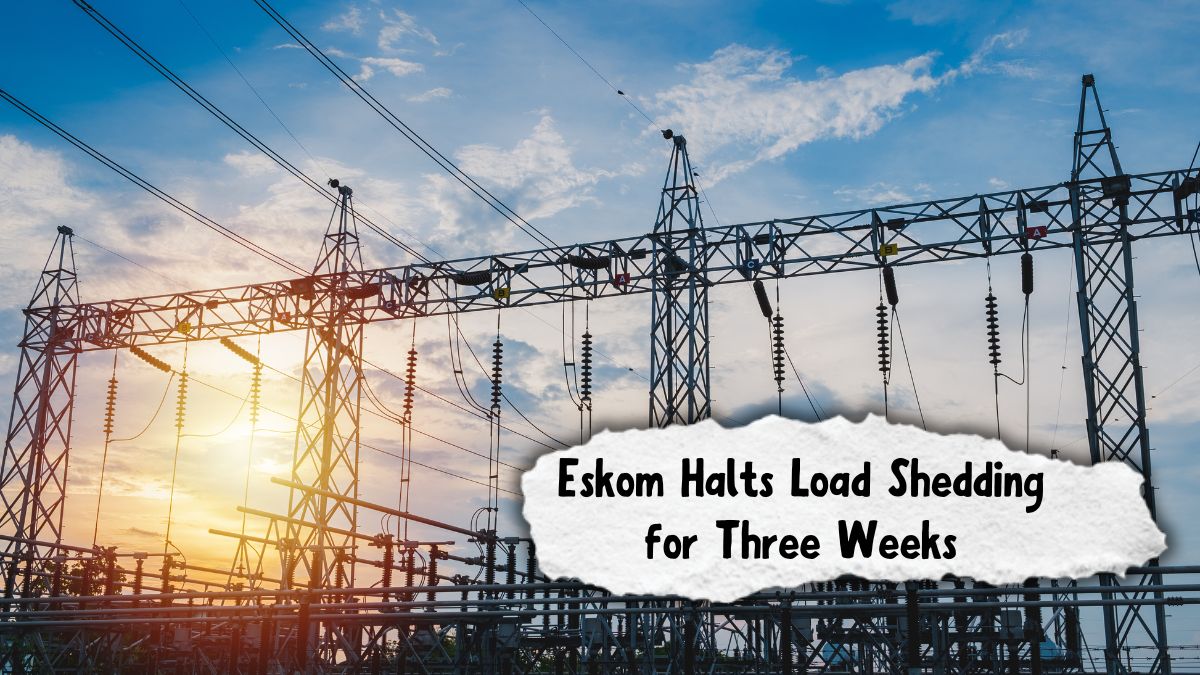In a move that has caught the nation by surprise, Eskom has announced a temporary halt to load shedding for a full three weeks. The pause in scheduled power outages comes as a welcome relief for households, businesses, and educational institutions that have long endured the disruptive cycle of rolling blackouts. According to the utility provider, this suspension is the result of improved power generation capacity, lower demand, and more effective grid management.
Why the Load Shedding Pause Happened
Eskom attributes the load shedding suspension to a combination of strategic improvements and favorable conditions. With winter temperatures milder than expected, electricity demand has dropped, easing pressure on the grid. Simultaneously, the utility has managed to bring more generation units back online, stabilizing its overall capacity.
This break not only highlights the effectiveness of recent operational changes, but also demonstrates that South Africa’s energy crisis is not insurmountable. However, Eskom has made it clear that the suspension is temporary, and the underlying infrastructure challenges still remain.
Boost for Businesses and Households
For small businesses and manufacturers, the halt in load shedding provides a vital chance to recover lost productivity. Many enterprises have been hit hard by recurring power cuts, resulting in disrupted operations and reduced revenue.
Households are also seeing a return to normalcy, enjoying uninterrupted access to electricity for cooking, heating, studying, and leisure. This has a positive effect on mental health, family routines, and education.
Eskom’s Long-Term Plans: A New Energy Vision
Though the current pause is brief, Eskom is using this opportunity to focus on long-term energy reforms. The utility’s strategy includes:
- Investing in renewable energy to reduce dependence on coal
- Modernizing outdated infrastructure for better reliability
- Implementing smart-grid technologies to streamline distribution
- Restoring public trust through consistent service delivery
These initiatives align with global sustainability efforts and may position South Africa as a forward-thinking leader in the energy space.
Obstacles Still on the Horizon
While this development is promising, Eskom continues to face serious challenges. The aging power plants, frequent technical breakdowns, and financial constraints make long-term stability a tough goal.
Additionally, the transition to renewable energy is a complex process that will require policy reform, private investment, and public engagement. Government support and community participation will be essential in ensuring a resilient energy future.
Citizen Impact: Power and Productivity Restored
For everyday citizens, this short break means no more planning around power outages. People can now use appliances without fear of interruption and resume work-from-home routines or online education seamlessly.
Schools and colleges, which often suffer from interrupted class hours, can now operate smoothly, offering students an improved learning experience.
Key Challenges to Sustaining This Relief
The sustainability of this pause hinges on Eskom’s ability to:
- Secure long-term funding
- Manage load efficiently during peak seasons
- Accelerate the rollout of alternative energy sources
- Avoid unplanned outages caused by mechanical failures
If these challenges are not met, load shedding could return in full force.
Future Energy Projects by Eskom
| Initiative | Focus | Expected Outcome |
|---|---|---|
| Green Energy Development | Solar, wind, hydro | Environmental sustainability |
| Infrastructure Overhaul | Plant upgrades, repairs | Better energy availability |
| Smart Technology Integration | AI & automation | Enhanced grid efficiency |
| Public-Private Partnerships | Energy co-investment | Innovation & funding |
What This Means for the Future of Energy in South Africa
This rare break in load shedding isn’t just about temporary relief—it offers a glimpse of what’s possible with improved management and modern systems. It also signals to the public and investors that reliable electricity may no longer be a far-off dream.
But the question remains: can Eskom maintain this progress, or is this simply a lull before another wave of outages?
(5) Frequently Asked Questions (FAQ)
Q1. Why did Eskom stop load shedding?
A: Eskom temporarily halted load shedding due to increased power generation capacity and reduced electricity demand driven by mild weather.
Q2. How long will the load shedding pause last?
A: The current suspension is expected to last for three weeks, depending on grid stability and maintenance outcomes.
Q3. What is Eskom doing to improve long-term power reliability?
A: Eskom is investing in renewable energy, upgrading infrastructure, and adopting smart technologies to modernize the power system.
Q4. How does the pause impact businesses and households?
A: Businesses can now operate without interruptions, and households benefit from consistent electricity use, improving quality of life and productivity.
Q5. Is load shedding expected to return after three weeks?
A: While there’s hope for continued relief, load shedding may return unless infrastructure upgrades and power supply improvements continue on schedule.
